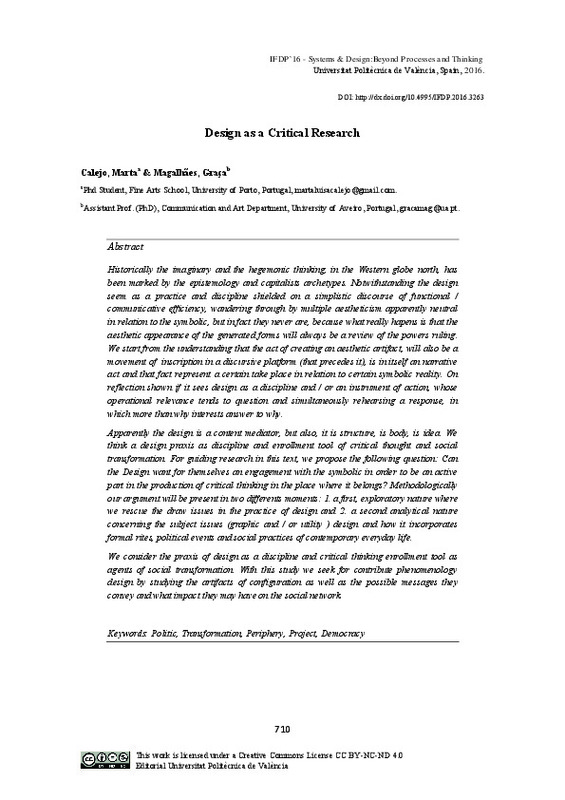JavaScript is disabled for your browser. Some features of this site may not work without it.
Buscar en RiuNet
Listar
Mi cuenta
Estadísticas
Ayuda RiuNet
Admin. UPV
Desde el lunes 3 y hasta el jueves 20 de marzo, RiuNet funcionará en modo de solo lectura a causa de su actualización a una nueva versión.
Design as a Critical Research
Mostrar el registro completo del ítem
Macedo Calejo, M.; Magalhães, G. (2016). Design as a Critical Research. En Systems&design:beyond processes and thinking. Editorial Universitat Politècnica de València. 710-720. https://doi.org/10.4995/IFDP.2015.3263
Por favor, use este identificador para citar o enlazar este ítem: http://hdl.handle.net/10251/87577
Ficheros en el ítem
Metadatos del ítem
| Título: | Design as a Critical Research | |
| Autor: | Macedo Calejo, Marta Magalhães, Graça | |
| Fecha difusión: |
|
|
| Resumen: |
[EN] Historically the imaginary and the hegemonic thinking, in the Western globe north, has
been marked by the epistemology and capitalists archetypes. Notwithstanding the design
seem as a practice and discipline shielded ...[+]
|
|
| Palabras clave: |
|
|
| Derechos de uso: | Reconocimiento - No comercial - Sin obra derivada (by-nc-nd) | |
| ISBN: |
|
|
| Fuente: |
|
|
| DOI: |
|
|
| Editorial: |
|
|
| Versión del editor: | http://ocs.editorial.upv.es/index.php/IFDP/IFDP/paper/view/3263 | |
| Título del congreso: |
|
|
| Lugar del congreso: |
|
|
| Fecha congreso: |
|
|
| Tipo: |
|








